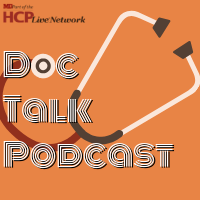Video
Management of Schizophrenia and Available LAIs
Transcript: Cristoph Correll, MD: Risperidone can be given as Risperdal Consta, which is micropsheres. This is given every 2 weeks as an injection. When initiating, since it takes a longer period until Risperdal Consta reaches therapeutic blood levels, there is a 3-week period where oral risperidone needs to be given. The safety and efficacy of Risperdal Consta is similar to that of risperidone oral. The efficacy has been demonstrated, leading to FDA approval.
Aripiprazole is delivered in 2 different forms. There is [Abilify] Maintena, which has a once-monthly injection. You start at 400 mg in all patients. And only in those patients who have tolerability issues, studies show it's less than 10%, you might be able to go down to 300 mg once monthly. Like with Risperdal Consta, there is a lag time until therapeutic levels are achieved. Here a 2-week time frame with oral aripiprazole between 10 and 20 mg is required.
There is also aripiprazole lauroxil, which comes in different dosages. Depending on the dose, it can be given once every 4, 6, or 8 weeks. If it's 6 or 8 weeks, the overall dose that is achieved in the blood is closer to 10 or 15 mg, maybe 20 mg, whereas if you have monthly injections, you can go up to an equivalent of 30 mg.
With the usual injection of aripiprazole lauroxil, there is a 3-week period that is required when oral aripiprazole is coadministered until the lauroxil formulation reaches its therapeutic blood levels. With the new formulation, the lauroxil reaches blood levels that are therapeutic within 2 or 3 days. There is only 1 dose of 30 mg oral aripiprazole required, and no further oral coadministration is needed.
John M. Kane, MD: In the case of paliperidone, we have 2 different injection intervals, there is the once monthly and every 3 months. You start on the once monthly, and then once someone has demonstrated their response and stability on that after a few months, then you can switch to the every 3 month injection. It varies from patient to patient, but people taking an injection once every 3 months is a tremendous advantage. It eliminates a lot of burden if I can say to my patient and his or her family, “You only have to come and have an injection 4 times a year,” that’s a very low burden. What confuses people at times is they think that’s going to determine the frequency with which the patient is seen by a mental health professional. These are 2 different issues. When you receive your injection is 1 issue, and how often you see your therapist, group therapist, or your rehabilitation counselor, that’s a different question. They don’t have to be linked.
Having less frequent injections can be very helpful for people. You don’t have to remember to take pills every day and you know that you’re covered. The families are in favor of this because they don’t have to worry. If you have had a family member who has had a psychotic relapse, and you’ve had to call the police to take that person to a hospital potentially against their will, that’s a really traumatic experience for everyone, for the patient and the family. When that person improves and leaves the hospital, it’s understandable for that family to be very concerned about whether that person is taking his or her medicine. That can lead to family conflict, and if someone is receiving a long-acting formulation, then that’s not a necessary conversation. I think the families feel relieved when someone is receiving their medicine via that route.
There have been a number of studies. The one referred to demonstrated that in patients who had only been ill for 5 years, the long-acting injectable formulation of paliperidone was associated with a significant reduction in negative outcomes. There are several studies that have been done in first-episode and early phase patients that show that the use of long-acting formulations can be very powerful in reducing the risk of relapse and hospitalization, even in someone who has only had 1 hospitalization for schizophrenia.
It’s important to recognize that we can have an impact on the early course of illness, and reducing the risk of relapse at that point is particularly critical. If you think about a young person who has had 1 psychotic episode but is now feeling much better and going back to school or back to work, if that person has another psychotic episode and has to be hospitalized again, that can lead to tremendous disruption in their trajectory in trying to get back to a relatively normal life. At an early age, even 1 or 2 relapses can lead to a erosion of life opportunities, and we want to avoid that particularly in the early stages of the illness. That’s when we have a chance to facilitate recovery, so we want to work hard to avoid any possible relapse if we can.
Transcript Edited for Clarity





